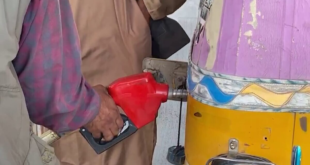MA’SUM GHAR, Afghanistan – A Canadian soldier headed to the relatively cushy Kandahar Airfield for a little New Year’s rest and relaxation died early Sunday after his armoured vehicle struck an improvised explosive device.
A gunner at a remote, no-frills forward operating base in the volatile Zhari district of southern Afghanistan, 27-year-old Jonathan Dion, was pronounced dead upon arriving by helicopter at the hospital on the sprawling base.
“We are saddened by the tragic loss of our brother,” said Brig.-Gen. Guy Laroche, Canada’s military commander in Afghanistan. “We will mourn him, we will honour him and we will remember him.
“While doing so, we will carry on with our mission of helping the people of Afghanistan find peace and stability, with the same resolve as we have always shown.”
Dion was killed and four other soldiers injured when their T-LAV – an older model light-armoured vehicle that has since been refurbished and rearmoured – struck a roadside bomb shortly after 9 a.m. local time about 20 kilometres west of Kandahar city.
Dion was a gunner with the 5th Regiment d’Artillerie legere du Canada from Val-d’Or, Que.
Laroche described the conditions of the injured soldiers as non-life-threatening.
“They notified their families themselves and one of them has already been released from the hospital,” he said.
In a statement, Prime Minister Stephen Harper said he was deeply saddened by Dion’s death, and wished the four injured soldiers a speedy recovery.
“These brave Canadian soldiers were helping bring hope to a population that has seen much hardship,” Harper said. “We will not forget the sacrifice made by Gunner Dion while working to make life better for others.”
Liberal Leader Stephane Dion said the lastest death in Afghanistan “is a reminder of the selfless courage that members of the Canadian Forces demonstrate every day, as they risk their lives to bring security and stability to this troubled region.”
Governor General Michaelle Jean also issued a statement, saying the fallen soldier had “responded to the call with incredible courage.”
She said he realized it was “not only a necessity but our duty to help the Afghan community which, above all else, aspires to peace, justice and prosperity after decades of insecurity.”
Radio reports at the time of the incident suggested the blast occurred just four or five kilometres east of Forward Operating Base Wilson along Highway 1, a main paved artery military convoys tend to speed through for safety.
It also happened at a time when much of the Canadian military’s best mine detecting gear was being used for an operation near the village of Sangisar – the birthplace of the Taliban and the site of a battle last fall that left two Canadian soldiers and an Afghan interpreter dead.
In that incident, Cpl. Nicolas Beauchamp and Pte. Michel Levesque were killed when their Light Armoured Vehicle drove over an IED.
Dion is the 74th Canadian soldier to die in Afghanistan and most of those fatalities have been the result of improvised explosive devices.
The addition of the EROC, or Expedient Route Opening Capability system, last fall has strengthened the military’s ability to find IEDs, Capt. Shawn Thompson, a combat engineer and troop commander involved in the operation said.
“This is definitely an asset that we should have here,” he said of the Transformer-like Buffalo and two single-man Huskies that helped clear the route of IEDs during the first day of the operation.
“We’re potentially saving lives with every IED that we find.”
While the heavy equipment turned up no bona fide explosives during the weekend operation, Cpl. Stephane Beaulieu said EROC has turned up about 17 IEDs since it came into use in October.
He said the crew is out clearing routes on a daily basis.
The South African-built Huskies look much like road graders and use a combination of X-ray and metal detection technology to spot potential mines.
They’ll mark the spot with paint for the Buffalo to inspect further with it’s long digging arm.
Designed with a high cockpit set back on the chassis with huge wheels in front, it provides maximum protection for the driver – one of whom escaped injury following a significant blast in October.
While the weekend operation was a success, it was not without a number of engineering glitches.
First the paint for the Huskies had frozen and later the camera system failed on the remote-controlled Improved Land Mine Detection System which is typically used as an alternative to clear roads during potentially dangerous offensives since it’s unmanned.
The troops were forced to rely on an old Leopard tank fitted with mine detecting rollers and an armoured Badger excavator for route clearance.
Aimed at gathering intelligence and disrupting Taliban activity in three areas known to harbour insurgents, the operation led by the Afghan National Army and supported by a number of Canadian troops yielded a detainee who claimed to be a cook, a variety of weapons, ammunition and bomb-making materials, passports and a blood-soaked tactical vest.
 Eurasia Press & News
Eurasia Press & News



